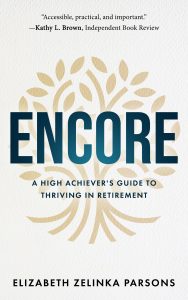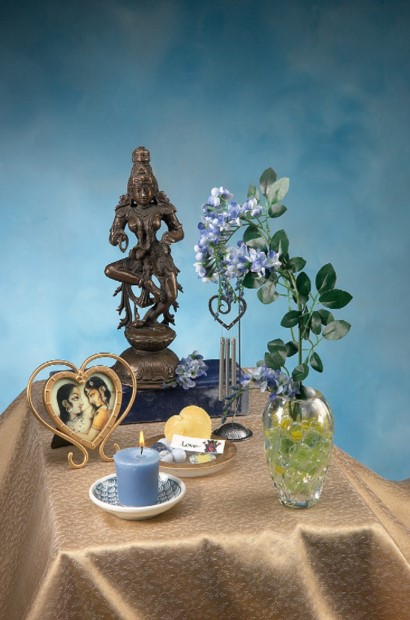Instead of Retirement, Think Graduation by Elizabeth Zelinka
 The following is an excerpt from Retirement Transition Expert Elizabeth Zelinka Parsons’s book, “Encore: A High Achiever’s Guide to Thriving in Retirement,” adapted from Chapter 2, “The Problem with the Retirement Construct:”
The following is an excerpt from Retirement Transition Expert Elizabeth Zelinka Parsons’s book, “Encore: A High Achiever’s Guide to Thriving in Retirement,” adapted from Chapter 2, “The Problem with the Retirement Construct:”
Instead of Retirement, Think Graduation
Retirement can be a turning point brimming with opportunity, a moment of life leading to new direction and challenge, a time when our best years remain ahead. But to have a fulfilling post-career life, we need to do some planning beyond our financial realm and look for inspiration aside from beaches, golf courses, and sailboats.
When we first sit down with our clients, we ask them how they feel about the notion of retiring. The common themes are stark. We hear things like, “I absolutely hate that word—let’s not use it.” Or “I’m really not sure—I know I feel very unsettled by the idea, but even worse—I have no framework for how to approach it.” Or “I haven’t said this to anybody, but the truth is, I’m terrified because I have no idea what’s about to happen to my life.”
At this juncture, we encourage a reframe of the looming inflection point from one of contraction (implied by the word retirement) to one of expansion, like one might feel at a graduation. Almost instantly, we see a shift in our clients’ energy at this suggestion. Now the focus is on what else is possible, having already achieved so much, instead of what is being left behind. Often, a new anxiety emerges because the possibilities can seem both endless and daunting, stoking a different type of perplexity.
Of course, we assure them they are in very good company. Our clients almost always share a sense of overwhelm and uncertainty at the start of our work together and imagine that they are alone in their confusion. We quickly assure them, for the reasons I have already detailed, that many people, especially those leaving intense careers, are similarly flummoxed.
The Paradox of Choice
Imagine it’s a hot summer day, and you pass by a gelato shop brimming with scrumptious flavors. Which would be better, tiramisu, cioccolato, or the sundry other temptations? Winnowing such a selection down to a favorite can jam your ability to choose. Whether determining something as consequential as your options after retirement or just picking an ice cream to suit your mood, you might experience indecision when faced with multiple options that you struggle to compare.
Decision paralysis is a topic we discuss with every client. As we point out, the very conditions that make this moment feel daunting also constitute the raw materials for the most opportune moment they may ever have lived. For the first time, they have financial security, an abundance of time, deep experience and knowledge, a pervasive network, and an understanding of how the world works. The paradox is that the very conditions that translate into a surge of options and opportunities can also block the ability to decide out of fear of making the wrong choice.
A common stress signal we’ll hear includes feeling rushed to determine their postwork future or bouncing around cluelessly without the comfort of side walls. Our job is to reorient a client’s thinking. Whatever the exact wording we use, it will invariably convey the following idea: you have as many skills and assets as you have ever had, and now the challenge is to combine them in a way that feels energizing and expansive. We then follow up with some reassurance along these lines: where you’re standing, it feels like a problem, but it’s actually a huge opportunity. To clinch the redirect, we acknowledge that they’re no longer floundering in a vacuum but, rather, are launched on a results-oriented path toward a desirable outcome.
Without a plan to organize your retirement, it feels like an impossible puzzle to put together. We’re here to help you build a road map to new purpose and meaning.
Summary
- Retirement originated as a political tool, not a well-being tool.
- Retirement marketing has created a lot of mythology, leading to two extremes in many people’s minds: either imminent decline or permanent vacation.
- When reframed, “retirement” presents an incredible opportunity, a graduation into more rather than a slide into less.
- Ironically, many people find the number of new directions available to them overwhelming and need a framework to sort and evaluate them.
- There are plenty of inspiring examples of people who found new levels of meaning, contribution, and satisfaction after their primary careers, and these role models can help light the way.
 About the author: Elizabeth Zelinka Parsons, J.D., is a Retirement Transition Expert, lawyer, and co-founder of two consulting firms, Zelinka Parsons and Encoraco. A magna cum laude graduate of Georgetown University Law Center and summa cum laude graduate of James Madison University, Elizabeth has spent over two decades shaping professional development and transition strategies for legal professionals. A former attorney at Milbank, she built a national consulting firm assisting AmLaw 100 firms with talent solutions. Author of “Encore: A High Achiever’s Guide to Thriving in Retirement ” (Feb. 5, 2025), Elizabeth combines analytical rigor with creative vision to help professionals redefine retirement as a dynamic opportunity for growth and fulfillment. Learn more at encoraco.com.
About the author: Elizabeth Zelinka Parsons, J.D., is a Retirement Transition Expert, lawyer, and co-founder of two consulting firms, Zelinka Parsons and Encoraco. A magna cum laude graduate of Georgetown University Law Center and summa cum laude graduate of James Madison University, Elizabeth has spent over two decades shaping professional development and transition strategies for legal professionals. A former attorney at Milbank, she built a national consulting firm assisting AmLaw 100 firms with talent solutions. Author of “Encore: A High Achiever’s Guide to Thriving in Retirement ” (Feb. 5, 2025), Elizabeth combines analytical rigor with creative vision to help professionals redefine retirement as a dynamic opportunity for growth and fulfillment. Learn more at encoraco.com.
Link to the book: https://www.amazon.com/dp/B0DCG8MVF1












